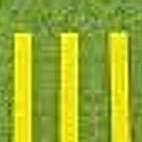Cyanuric Acid
-
Recently Browsing 0 members
- No registered users viewing this page.
-
Topics
-
-
Popular Contributors
-
-
Latest posts...
-
7,524
-
3
-
0
Crime 2 Nigerian Men Caught Crossing into Thailand from Cambodia
Picture courtesy of Kaoded. Two Nigerian nationals have been apprehended by Thai border forces after illegally entering the country through a sugarcane field in Aranyaprathet district, Sa Kaeo province. The pair had reportedly paid over 16,000 baht each to a smuggling network in a desperate bid to reach the Nigerian Embassy in Bangkok. The arrest took place around 05:30 on 6 August, after soldiers from the Burapha Task Force, including special units from the Aranyaprathet Task Force and Ranger Company 1206, were conducting routine patrols along the Thai-Cambodian border near Ban Kud Hin. Authorities spotted four individuals moving stealthily through agricultural terrain in a sugarcane plantation. As soldiers moved in to investigate, two of the group fled under the cover of darkness, successfully evading capture by retreating back across the border into Cambodia. The remaining two were detained and later identified as Nigerian nationals. One was found to be in possession of an expired passport, while the other had no identification documents at all. A translator was brought in to assist with questioning. Despite not knowing each other beforehand, both men told officials they shared the same objective, to return to Nigeria. They claimed to have been stranded in neighbouring countries, Vietnam or Cambodia, both of which lack a Nigerian diplomatic mission. Thailand, with its Nigerian Embassy in Bangkok, became their target destination. In their statements, the men revealed they had contacted African acquaintances who arranged for Cambodian guides to smuggle them across the border. Each man paid approximately USD 500 (around 16,200 baht) for the journey. The smugglers instructed them to wait near the border, before guiding them on foot through a plantation in an attempt to avoid detection. Following their arrest, the two Nigerians were taken to Ranger Company 1206 for initial processing and documentation. They were subsequently handed over to investigators at Khlong Nam Sai Police Station, where legal proceedings for illegal entry are now underway. Authorities have reiterated their commitment to preventing illegal border crossings and say investigations into the smuggling network involved will continue. Adapted by Asean Now from Kaoded 2025-08-07 -
4
U.S. FDA approves Moderna’s lower-dose COVID-19 vaccine for some
This is simply nonsense. I'll have to have a word with Mr Bancel about spreading misinformation. No-one died from any virus last year in America; or anywhere else for that matter. -
7,524
-
77
UK State Pension Payments to a Thai Spouse
They randomly send out a proof of life form that has to be certified by an “approve person” so you might have some difficulties there.
-
-
Popular in The Pub









Recommended Posts
Create an account or sign in to comment
You need to be a member in order to leave a comment
Create an account
Sign up for a new account in our community. It's easy!
Register a new accountSign in
Already have an account? Sign in here.
Sign In Now